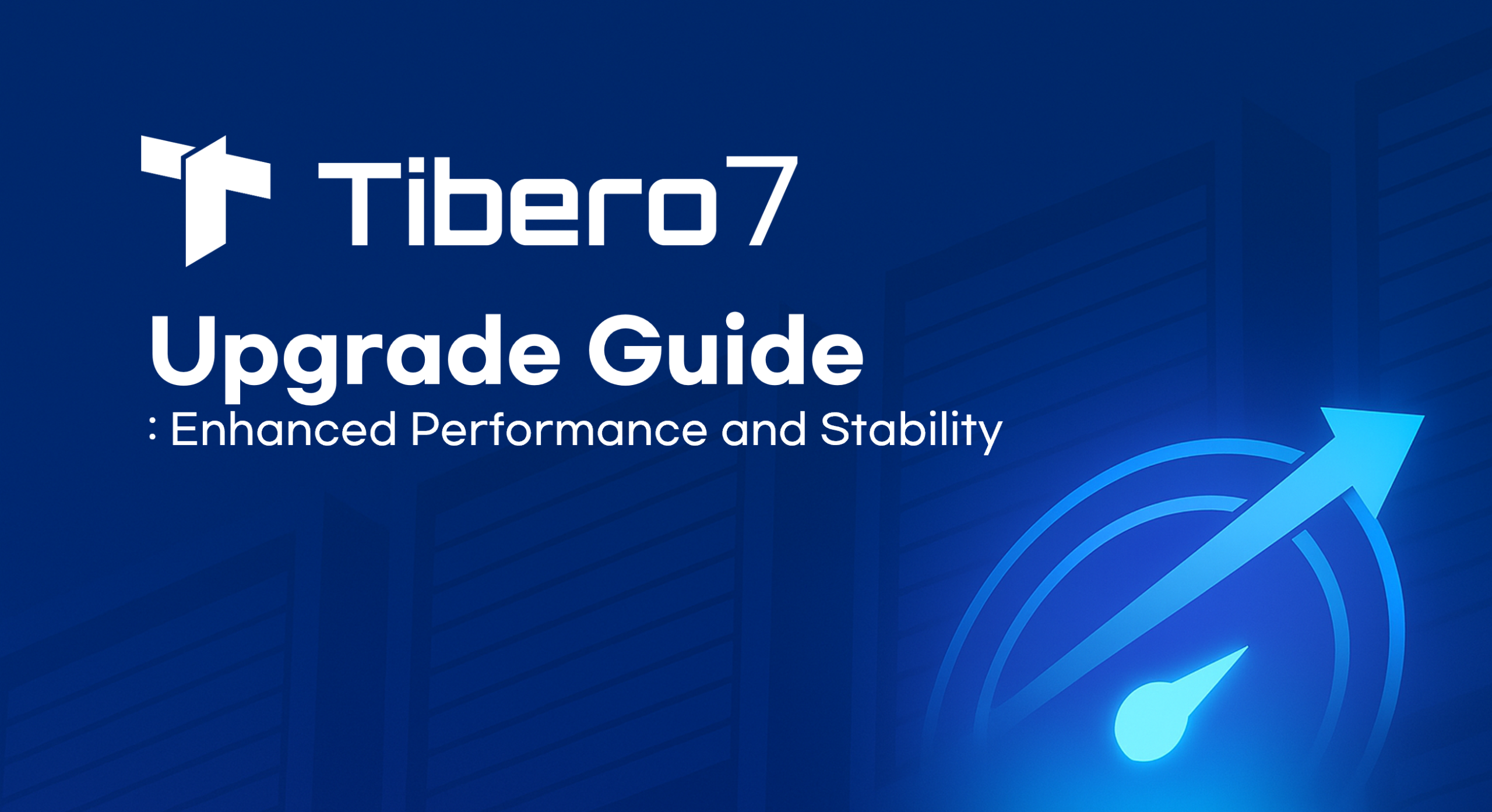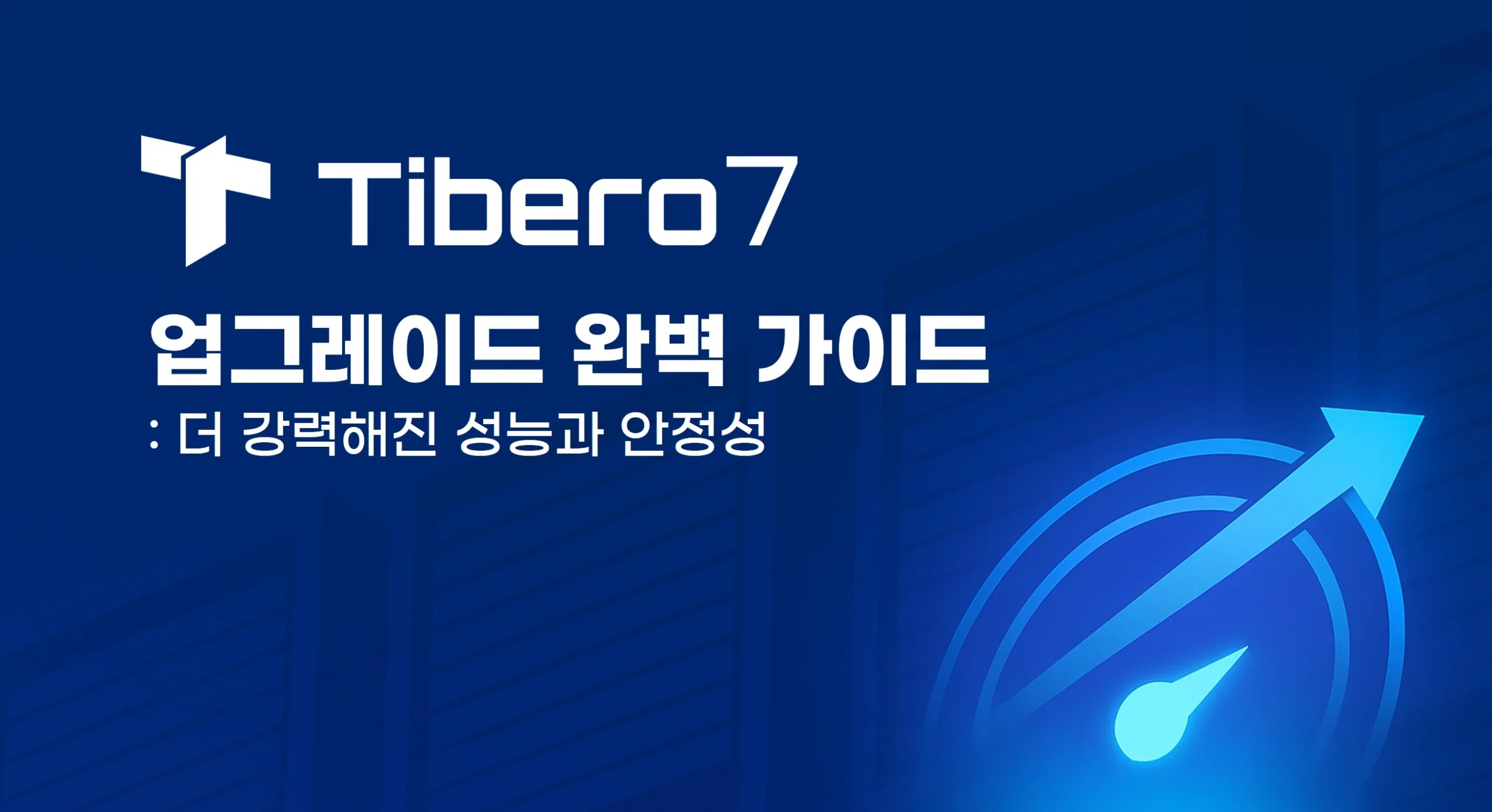
Tibero7 goes beyond a simple version upgrade — it is a fundamentally redesigned DBMS, rebuilt from its engine structure to its management architecture.
While maintaining compatibility with previous versions, it delivers an entirely new level of performance, security, and operational efficiency, achieving exceptional stability and agility.
This post summarizes the key innovations of Tibero7 and outlines the actual upgrade procedures.
1. Support Policy
[EOS(End of Service) and Extended Support schedule of Tibero]

Tibero5 and 5SP1 have already reached the end of service, while Tibero6 will end service (EOS) in March 2025 and receive extended support until March 2028.
Therefore, organizations still operating legacy versions are advised to upgrade to Tibero7 to maintain stable service continuity.
2. Upgrade Methods
Tibero7 supports two main upgrade methods: Migration Upgrade and Patch Upgrade.
(1) Migration Upgrade
- Applicable Versions : Tibero5, Tibero5SP1, Tibero6 (FS01~FS07)
You can choose from four migration options when upgrading to Tibero7:
- D-Works(T-UP)-Based Migration
- Uses the D-Works (T-UP) appliance to extract DDL and data from the source DB, then load them into the target DB via a GUI-based interface.
- Dump File-Based Migration (tbExport / tbImport)
- Exports dump files using
tbExportfrom the source DB and loads them into the target DB using tblmport. - Both DDL and data are transferred through dump files.
- Exports dump files using
- Table Migrator-Based Migration
- Uses a server module to transfer data table-by-table in parallel, providing high-speed migration for large datasets.
- DB Link-Based Migration
- Establishes a DB Link between source and target databases for direct data transfer with parallelized throughput.
(2) Patch Upgrade
Patch Upgrade applies when upgrading Tibero6 → Tibero7 by performing patch tasks that switch the major version.
- Applicable Versions : Tibero6 FS07 PS01~PS03, Tibero6 FS06 CS1902, Tibero6 FS07 CS2005
[The method depends on 4 the current versions]

Before upgrading, you must verify your current version and select the appropriate Patch Task.
3. Pre-Upgrade Analysis
Before performing a Tibero7 upgrade, it is essential to conduct Pre-Analysis to minimize potential risks.

Key checks include:
(1) DBMS environment and configuration (Single, TAC, HA, etc.)
(2) Staff interviews and on-site assessments
(3) Upgrade gap analysis and mitigation plan
(4) Validation of 3rd-party integration products
(5) Definition of upgrade priorities and considerations
(6) Effort and schedule estimation
4. Major Changes
A. Newly Added Features
- New Functions: JSON functions (JSON_OBJECT, JSON_VALUE, etc.), LISTAGG, TO_NCLOB
- New Packages: DBMS_ALERT, DBMS_SQLTUNE, DBMS_TPR
- Query Hints: HASH_SJ, MATERIALIZE, RESULT_CACHE
- Data Types: JSON, XMLTYPE, BINARY_DOUBLE, INTERVAL
- ESQL/C Enhancements: Multi-line
EXEC SQL INCLUDEsupport, newRUNTIME_MODEoption
B. Modified Features
- DDL Syntax Additions:
IF NOT EXISTS / IF EXISTS- supported from Tibero 7.2.4
- Earlier versions produced errors depending on object existence
- APM → TPR Renaming:
- APM (Automatic Performance Monitoring) renamed to TPR (Tibero Performance Repository)
- Password Encryption Change: MD5 → SHA256
- Index & VARCHAR Length Expansion:
- Index: 4,062 → 6,424 bytes
- VARCHAR: 4,000 → 65,536 bytes
C. Bug Fixes and Improvements
- Improved DB Link performance
- Fixed nested aggregation function errors
- Corrected public synonym privilege issues
- Restricted mixed use of ANSI Join and Oracle Outer Join
- Improved leap year handling and SYSTIMESTAMP consistency
D. Parameter and Kernel Adjustments
- Removed obsolete parameters (
_USE_UDP_TSN_SYNC,_EX_USE_AIO_FULL_SCAN, etc.) - Updated default values for parallel processing parameters (
PEP_PROC_CNT,_WTHR_PER_PEP) - Updated recommended kernel settings in
/etc/sysctl.confand/etc/security/limits.conf
Through systematic pre-analysis and an appropriate upgrade strategy, you can upgrade to Tibero7 efficiently while maintaining your existing system’s stability.




